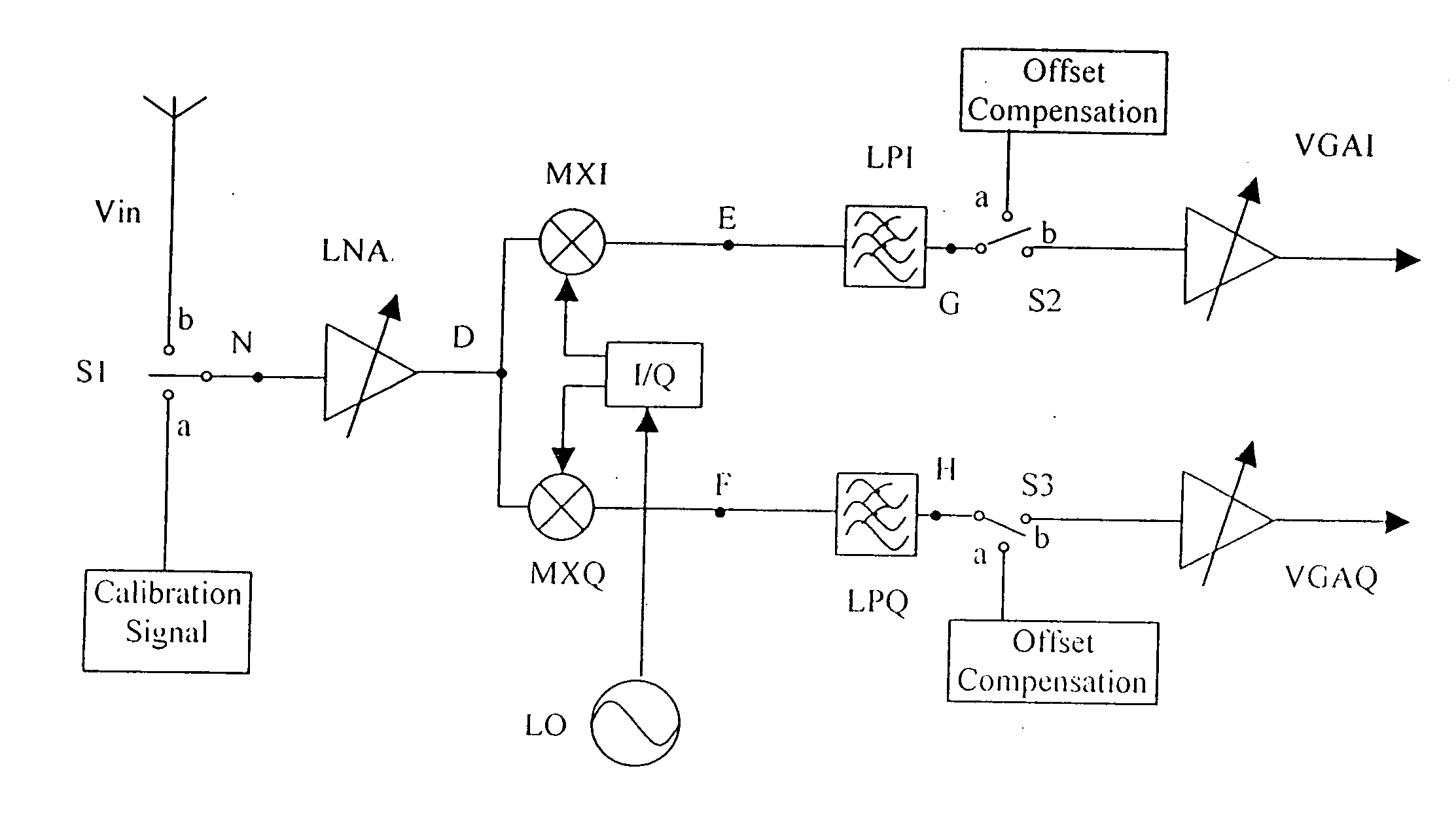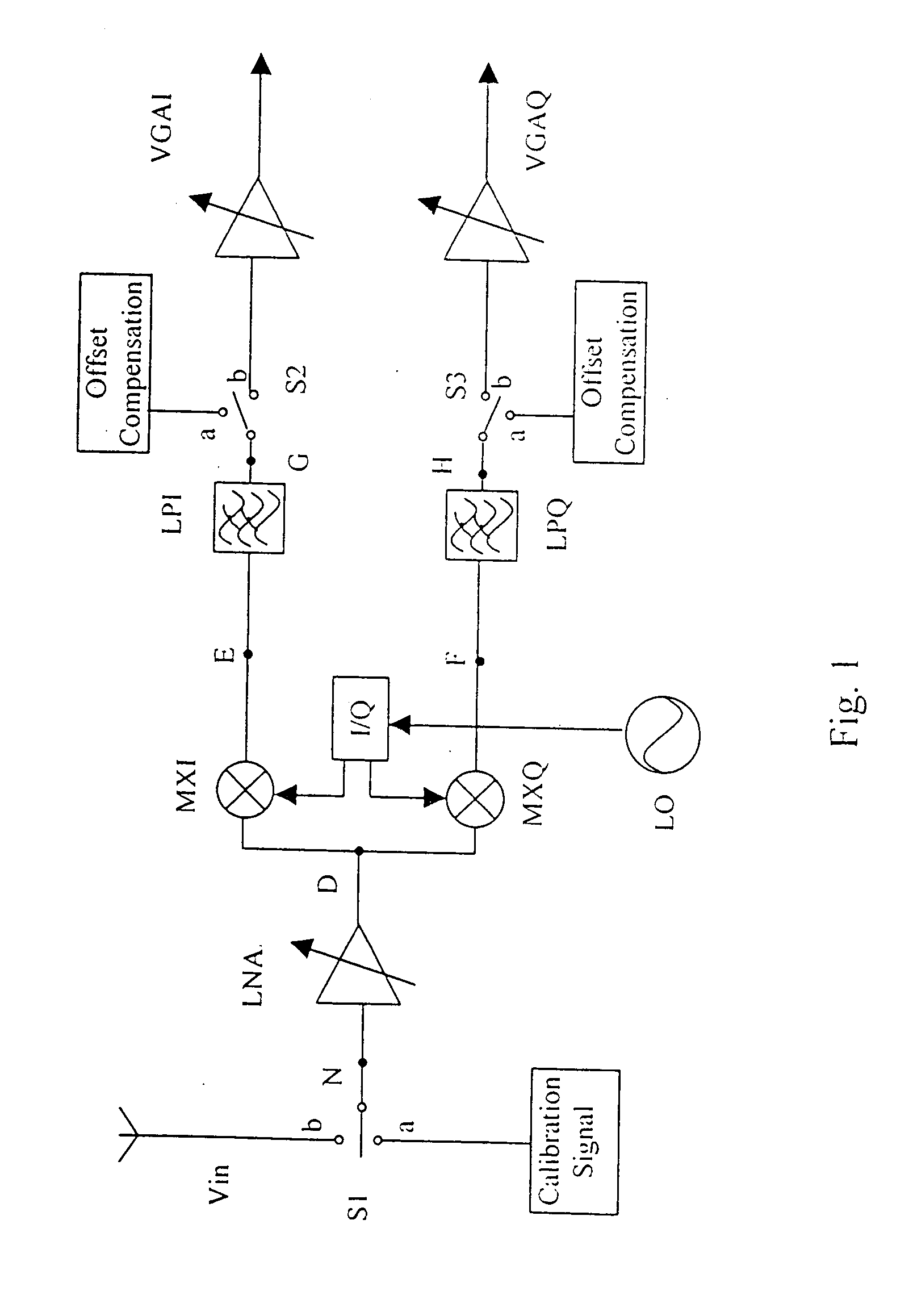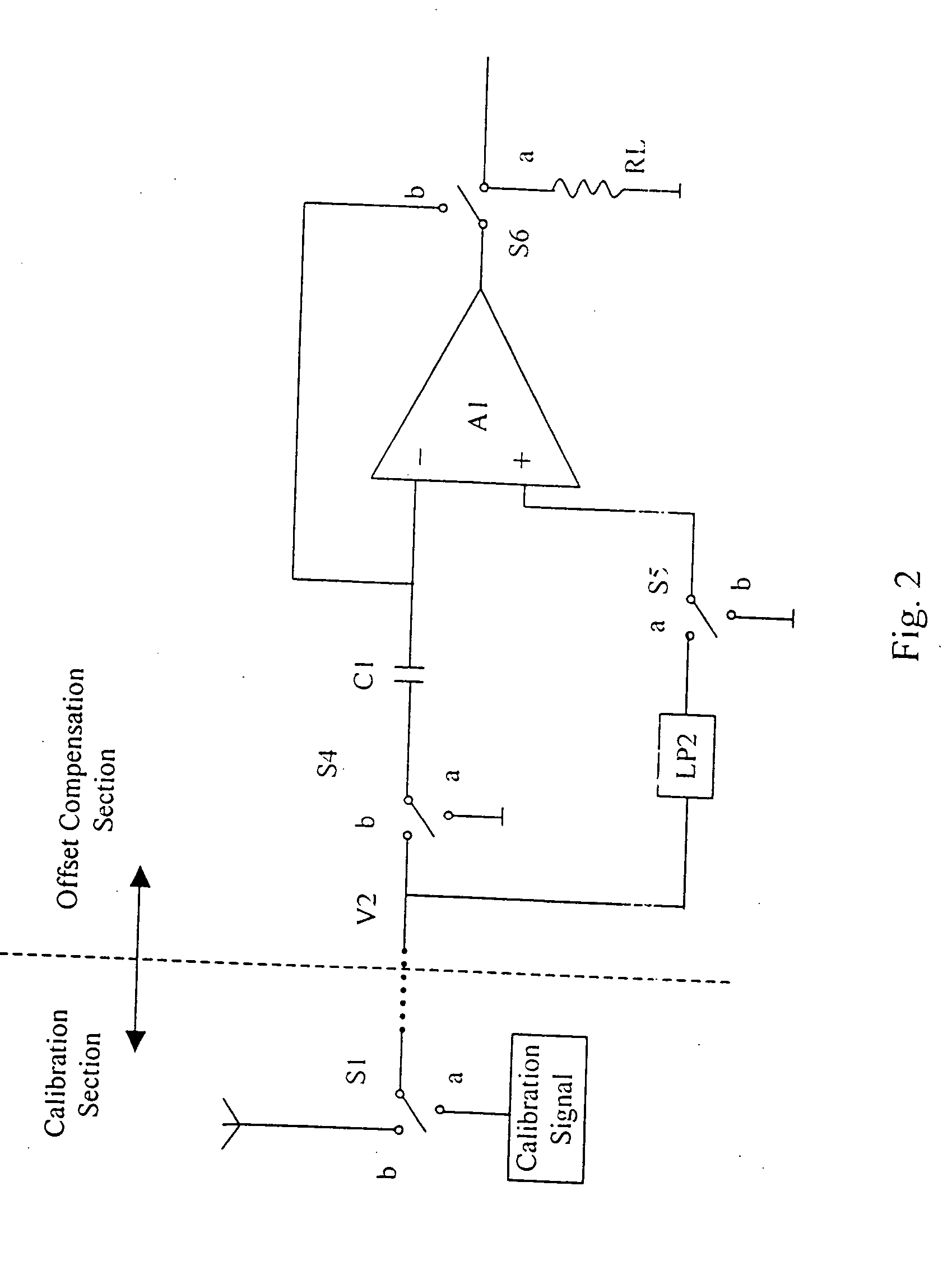DC offset and 1/f noise compensation of a direct conversion receiver
a direct conversion and receiver technology, applied in the field of radio receivers, can solve the problems of 1/f noise, sensitivity to dc offset, and inability to solve both dc offset and 1/f noise, and achieve the effect of reducing 1/f nois
- Summary
- Abstract
- Description
- Claims
- Application Information
AI Technical Summary
Benefits of technology
Problems solved by technology
Method used
Image
Examples
Embodiment Construction
[0013]FIG. 1 shows the basic block diagram of the present invention as applied to a direct conversion receiver. Normally the receiver operates the single-pole, double-throw (SPDT) switches S1, S2, S3 in position “b”. The incoming signal Vin is amplified by a low-noise amplifier LNA. The amplifier signal from the LNA is mixed with a local oscillator (LO) with the same frequency as the incoming signal Vin. The local oscillator generates an in-phase component I and a quadrature component Q. The I component and the Q component beat with the amplified incoming signal from the LNA in the mixers MXI and MXQ respectively to produce two zero frequency (i.e. DC) IF signals. The signal from MXI is filtered by a low-pass filter LPI, and the signal from MXQ is filtered by low-pass filter LPQ to eliminate any double frequency image signals. The filtered signals LPI and LPQ are then amplified by amplifiers VGAI and VGAQ respectively before demodulation. Since VGAI and VGAQ are DC amplifiers, the D...
PUM
 Login to View More
Login to View More Abstract
Description
Claims
Application Information
 Login to View More
Login to View More - R&D
- Intellectual Property
- Life Sciences
- Materials
- Tech Scout
- Unparalleled Data Quality
- Higher Quality Content
- 60% Fewer Hallucinations
Browse by: Latest US Patents, China's latest patents, Technical Efficacy Thesaurus, Application Domain, Technology Topic, Popular Technical Reports.
© 2025 PatSnap. All rights reserved.Legal|Privacy policy|Modern Slavery Act Transparency Statement|Sitemap|About US| Contact US: help@patsnap.com



